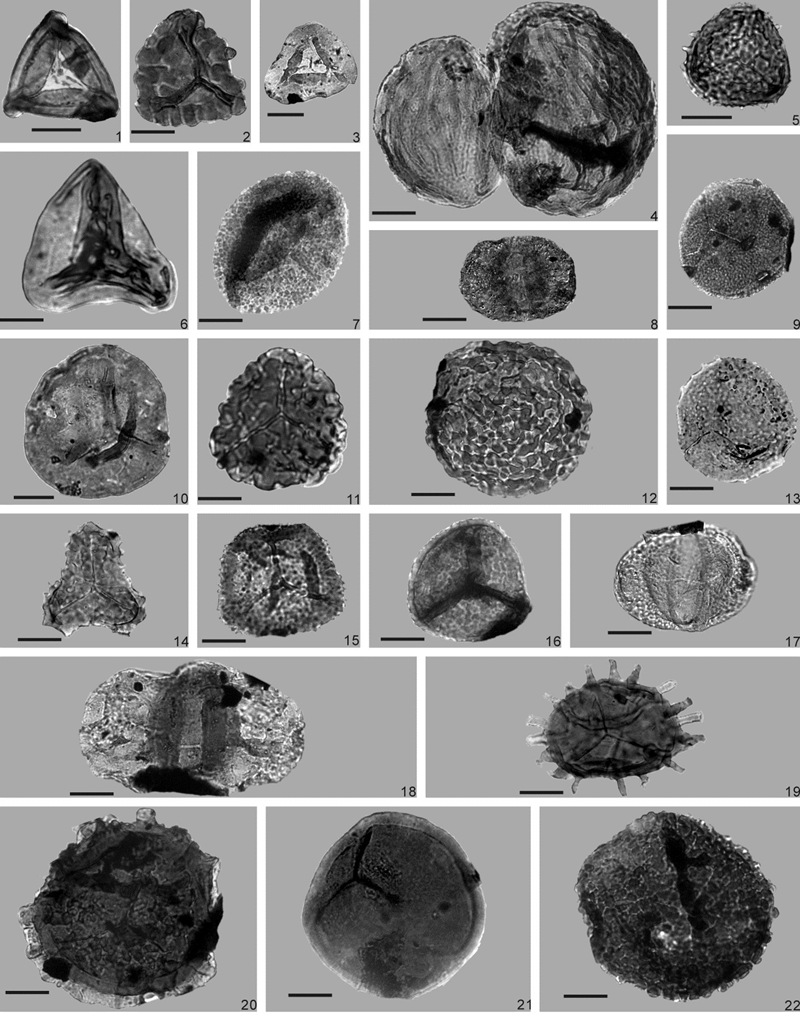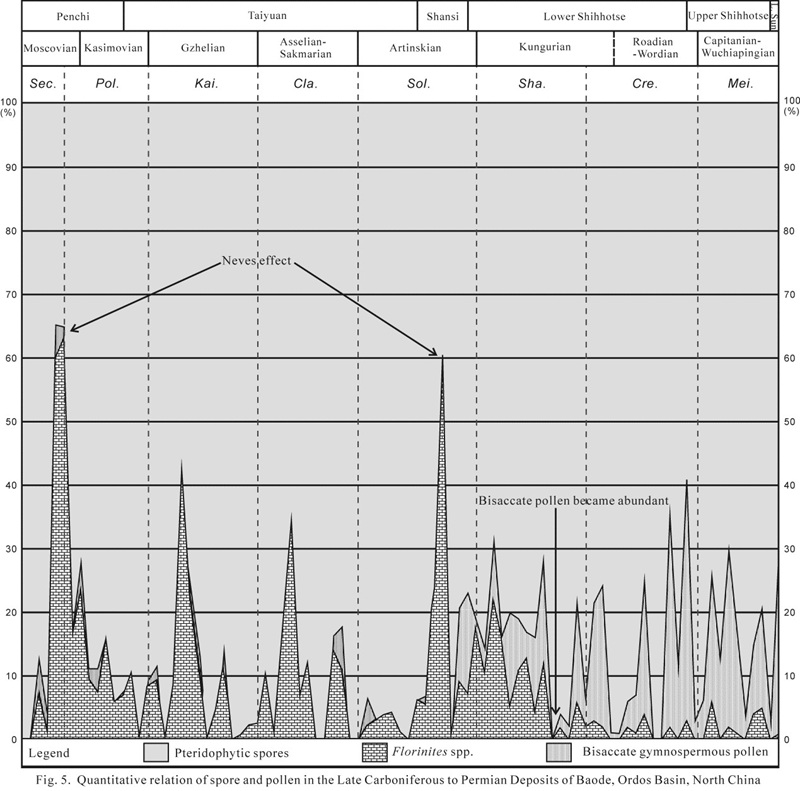The Ordos Basin is situated in the western part of the North China Craton. Biostratigraphic studies mainly for correlation have been promoted since the 1980s by the extensive oil and gas exploration activity in this hydrocarbon-rich basin. However, intervals with marine fossils and correlative horizons are rare in the Basin, preventing reliable correlation and accurate age calibration. Palynology is the most useful biostratigraphic tool for this basin, especially the Late Pennsylvanian to Wuchiapingian deposits, because of the abundance, diversity and widespread distribution of palynological material.
To establish a comprehensive miospore biozonation with clearly defined biozonal boundaries for the Late Palaeozoic deposits in the Ordos Basin and to facilitate palynological correlation throughout the Cathaysian palaeofloristic region, well-preserved miospores are recorded and illustrated from the Penchi to the lower part of the Sunjiagou formations in the Baode section of the Ordos Basin, by Dr. LIU Feng, Prof. ZHU huaicheng and Prof. OUYANG Shu from Nanjing Institute of Geology and Palaeontology, Chinese Academy of Sciences. Eight palynological biozones are proposed for the Late Pennsylvanian to Wuchiapingian interval. Among them, five biozones are refined from pre-existing biozones. The biozones are comparable throughout the North China Craton. In contrast, long distance palynological correlation between North China and Euramerica only extends to the end of the Bolsovian (early Moscovian). By reference of associated marine fossils and magnetostratigraphic data, approximate stratigraphic correlation with the international stages is possible in Ordos Basin. Quantitative abundances of spores and pollen from the Late Pennsylvanian to Wuchiapingian reflect a wet-hot palaeoclimate in the Ordos Basin but with an increasing tendency of palaeoclimatic drying from the Early Kungurian. This drying tendency can be recognized throughout the North China Craton and seems to be related to the suturing process between North China Craton with the combined northeastern China blocks. Reduviasporonites which occurs often in relatively high frequencies in many Permian–Triassic boundary sections was recorded for the first time from the early Kungurian Shansiensis Biozone.
Related information of this paper: Liu, F., Zhu, H.C., Ouyang, S. (2015): Late Pennsylvanian to Wuchiapingian palynostratigraphy of the Baode section in the Ordos Basin, North China. Journal of Asia Earth Science, 111, 528-552.

Selected miospores from the Shansiensis Biozone. Specimens are identified by sample number-slide number. Miospore location on slides are given as England Finder coordinates

Vertical distribution of miospore Biozones and selected miospores in Baode section, Ordos Basine, North China. (Dashed line represents uncertain stratigraphic boundary. L.Sun = Lower part of Sunjiagou Foramtion.)

